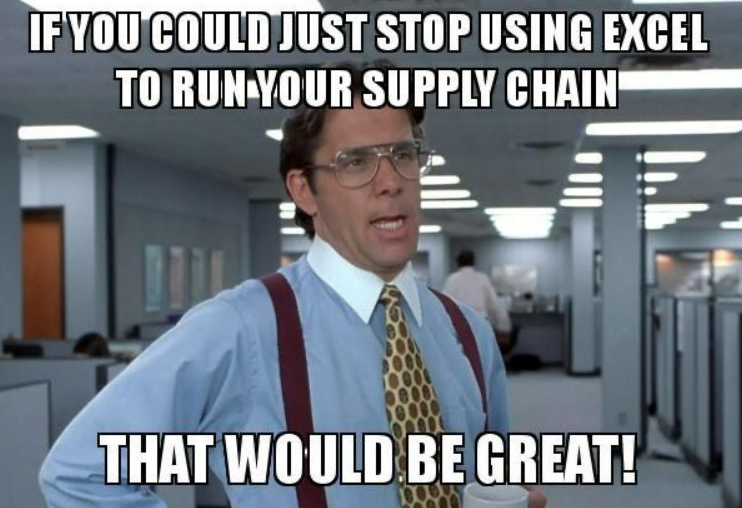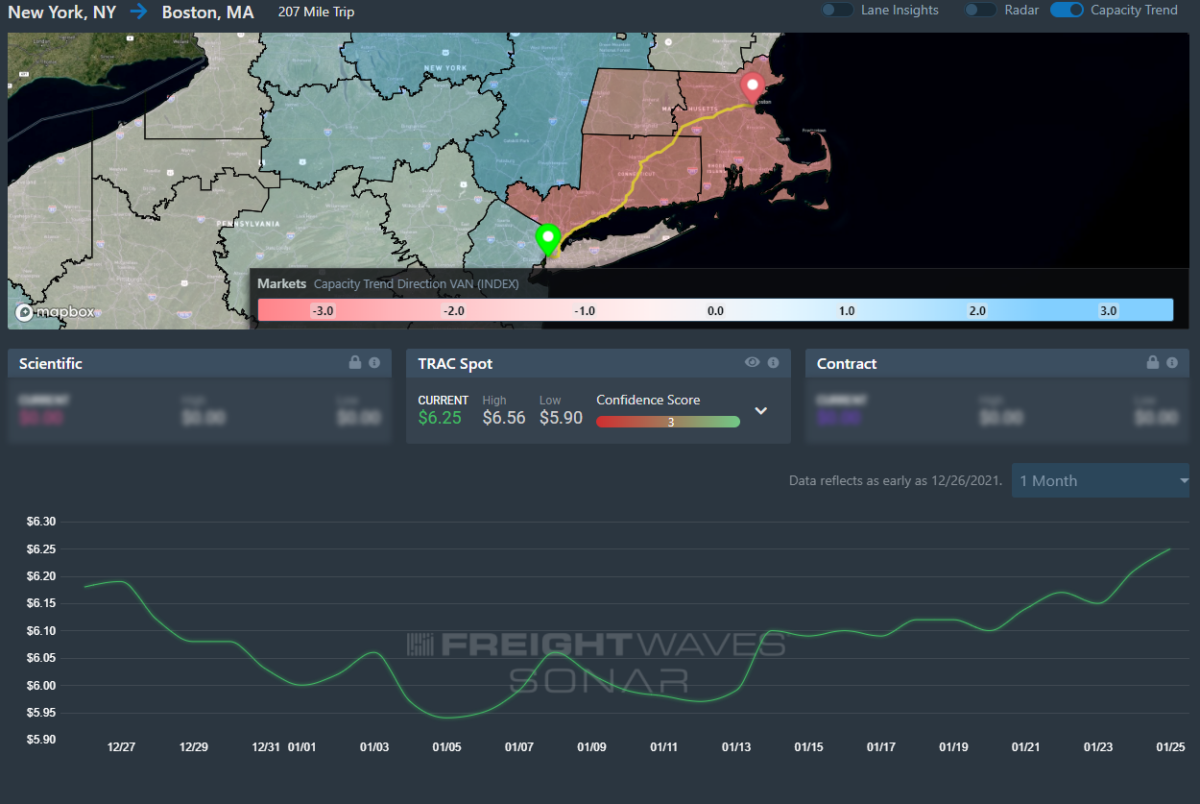Episodes of Check Call the Podcast come out every Tuesday at 12:30 p.m. EST on FreightWavesTV.
Mark your calendars for Global Supply Chain Week Feb. 14-18. Register for your spot now.
Hot Take

We chatted earlier this week about RFPs and how they need to be better, more cohesive and easier to process. That’s much easier said in theory; putting it into practice can be a lot harder than originally anticipated.
The RFP process is evolving. Traditional RFPs are heading out and a new, more sophisticated RFP is coming in. Traditional RFPs, that most people still run today, were built for the technology of 20 years ago. Look, we all love Excel; it’s the backbone of every pricing department. But most current RFPs are becoming time-consuming and expensive to administer.
Let’s start with the potential easy fix. We have ALL done it. You send an Excel file of lanes you need pricing back on, some details about the customer, the scope of work and pictures of the freight. Carriers respond with their rates for every lane. Well, then someone has to take those Excel files, run them against each other and whip out an analysis. That’s just for round one pricing.
Round two you rinse and repeat the same process. Offer carriers the chance to change their rates on the lanes they really want. Again you have to manually run those rates against each other in one master Excel file. It’s time-consuming and can take, depending on the size of the bid, a day or two to process the responses, let alone build a network and make a recommendation to the customer on what the cost savings and network will look like.
Upgrading this type of RFP process is much less of an undertaking than something that’s interwoven into many legacy systems. There are cloud-based systems that allow you to send the RFP, collect the results and run analysis all within their technology. Not once do you have to have 10 Excel files going for each carrier and try to remember which carrier’s file you’ve already processed.
Taking a customer’s freight out to bid shouldn’t be a cost-prohibitive exercise for you. Sure, you’ll have customers who change their minds after you’ve already completed a bid and prepared them a new network, but those are in the minority, hopefully.
The current unpredictability of the freight market has changed how shippers behave. Shippers are moving away from the longer one-year contract rates to three-to-six-month contracted rates. It’s a competitive market and if you are working with rates from a year ago, that’s not going to get you much traction today.
By having the ability to run RFPs and process them quicker — that’s the flexibility and adaptability you need. It’s a dynamic market we’ve settled in and as contract rates and market rates start to blur the lines, time is of the essence. You can’t be caught relying on technology from 20 years ago.
Take a look at your own internal RFP process; see what can be improved quickly and see if there’s software that can save some poor pricing analyst hours of uploading Excel files to a rating software or locking up their computer because those files have gotten too big. It’s 2022, time to upgrade and change with the times.
Quick Hit

East Coast vs. West Coast — a battle that has taken many different forms over the years. This year we’re taking the fight to the roads. The Ports of Los Angeles and Long Beach have clogged up capacity in California, and ships diverting to the East Coast have made the Ports of New York and New Jersey the next hottest ticket.
Rejection rates are rising week over week in the Northeast and ever so slightly falling in the West. Carriers are pricing double what they would, pre-pandemic, in Southern California. The Northeast has always been a different kind of animal. Once you get up there you don’t get out. Moves are short and heavily metropolitan. Highway congestion makes it a nightmare for carriers to turn multiple loads a day. That on top of increased volume at the Ports of New York and New Jersey means we stand to hit a gridlock on both coasts if we aren’t careful with how we use available capacity.
As always if you’re booking loads in the Northeast, may your receivers be nice and only tell you what they REALLY think of you once, instead of multiple times after they thought they hung up the phone. Treat your Northeast carriers well. They got a season of nor’easters coming up, specifically this weekend.
TRAC Thursday

East Coast vs. West Coast — a battle that has taken many different forms over the years. This year we’re taking the fight to the roads. The Ports of Los Angeles and Long Beach have clogged up capacity in California, and ships diverting to the East Coast have made the Ports of New York and New Jersey the next hottest ticket.
Rejection rates are rising week over week in the Northeast and ever so slightly falling in the West. Carriers are pricing double what they would, pre-pandemic, in Southern California. The Northeast has always been a different kind of animal. Once you get up there you don’t get out. Moves are short and heavily metropolitan. Highway congestion makes it a nightmare for carriers to turn multiple loads a day. That on top of increased volume at the Ports of New York and New Jersey means we stand to hit a gridlock on both coasts if we aren’t careful with how we use available capacity.
As always if you’re booking loads in the Northeast, may your receivers be nice and only tell you what they REALLY think of you once, instead of multiple times after they thought they hung up the phone. Treat your Northeast carriers well. They got a season of nor’easters coming up, specifically this weekend.
How’d the lemonade stand do?

BJ’s Wholesale Club apparently did so well it bought four refrigerated distribution centers and the corresponding private fleet from Burris Logistics. BJ’s has joined the list of retailers that have opted to buy a transportation company to guarantee they have capacity for their goods. BJ’s will have ownership of four Burris distribution centers and the private fleets. Burris will retain ownership of Honor Foods and Trinity Logistics.
While they might not have been acquired by a major retailer, Knight-Swift smashed its Q4 earnings out of the park. Adjusted earnings per share for Q4 were $1.61, 70% higher than last year. Their truckload division clocked $993 million in revenue, the logistics segment almost doubled its revenue to $300 million, and the newly beefed up LTL division brought in $927 million as the acquisitions of AAA Cooper and Midwest Motor Express allowed the company to have a nationwide LTL network.
The more you know
CarrierDirect rebrands as Metafora to reflect drive ‘to go even deeper’
Automotive supply chain in for slow normalization in 2022
Buttigieg prioritizing truck driver pay
Logixboard raises $32M to support freight forwarders’ growth











